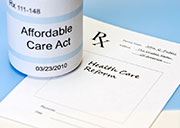
FRIDAY, May 2, 2014 (HealthDay News) — Sheri Samotin, a California-based patient advocate, knows the ins and outs of health insurance, including how to find a participating physician.
But when first navigating the new health insurance options that had sprung from the Affordable Care Act, even she had trouble getting straight answers.
Health insurers’ provider directories often weren’t current, and even doctors’ offices were sometimes unsure of what plans they were in.
“A lot of patients don’t know how to ask the question,” Samotin said. “Now, I do know how to ask the question, and I’m still getting the runaround.”
It’s just one of the bumps that newly insured Americans and individuals switching health plans may encounter as they try to use their health insurance coverage under Obamacare.
To make the process as painless as possible, health insurance experts say it helps to have some basic understanding of how your health plan works. If not, find someone who can help you navigate the health care system.
Here are a few pointers to keep in mind before you make an appointment, use health services or fill a prescription:
Pay your premium
Consumers who applied for coverage and selected a health plan should have received instructions on how to pay their first month’s premium and when it’s due.
If you think you signed up for a health plan but never heard back, your enrollment attempt may have fallen through the cracks. Contact the health insurer directly to check on your status.
Darlene Tucker, an independent health insurance broker in Scotts Hill, Tenn., also advises consumers to pay their monthly premiums on time.
“If someone has bought a policy and they allow that policy to lapse because they did not pay their premium, that policy can no longer be reinstated with most of the carriers,” she said.
Look for an in-network provider
Choosing a doctor or hospital that participates in your health plan is the most cost-effective route.
“If you go out of network, you’re more likely to have high charges,” said Cheryl Fish-Parcham, private insurance program director at Families USA, a nonprofit patient advocacy organization in Washington, D.C.
Some health plans offered through the public exchanges, or marketplaces, have narrower provider networks than private health plans offered outside the exchanges.
Samotin, who is founder and president of Marina Del Rey, Calif.-based LifeBridge Solutions L.L.C. and its AttackMedicalBills.com subsidiary, found a neurologist on staff of a major medical center that contracts with her client’s health plan. But the neurologist’s office staff could not tell her whether the doctor participates in the health plan. So she contacted the hospital’s insurance department and waited for a senior specialist to respond, but no one returned the call.
To avoid further delay, she selected another neurologist on the health plan’s list of participating providers. After confirming the information with his staff, she booked an appointment.
As proof of his in-network status, Samotin printed pages from the health plan’s web site showing the doctor’s name on the day she made the appointment for her client and the day the client visited the doctor.
“I know there’s going to be testing and I know it’s going to be expensive, and it’s critical that it’s in-network,” she explained.
Check your drug coverage
Health plans have a “formulary,” or list of covered drugs. Consumers typically pay the least for generics, more for “preferred” brand-name drugs and even more for “non-preferred” medications.
Some drugs are not covered at all, or the number of doses that a person needs might not be covered. If that’s the case, you might require special permission from your health plan. The prescribing physician must attest that other preferred drugs have already been tried and don’t work, that a preferred drug will cause side effects or that a different dosage is required.
Many consumers might have selected a marketplace plan without knowing how the medicines they take are covered, or if they’re covered at all. Almost half of the state and federal exchange plans have formularies that are difficult to impossible for consumers to access, according to a new analysis by Avalere Health L.L.C., a Washington, D.C.-based consulting firm.
If you hope to keep co-payments to a minimum and don’t want any costly surprises at the pharmacy counter, call your health plan before filling your prescription.
“Check that the drug you’re taking is on the formulary of the plan,” advises Families USA’s Fish-Parcham. “If it’s not, see if your doctor can prescribe a medicine that is on formulary.”
More information
HealthCare.gov has information on using your new marketplace coverage. And the Institute of Medicine can tell you more about
how to use health insurance.
Copyright © 2025 HealthDay. All rights reserved.

